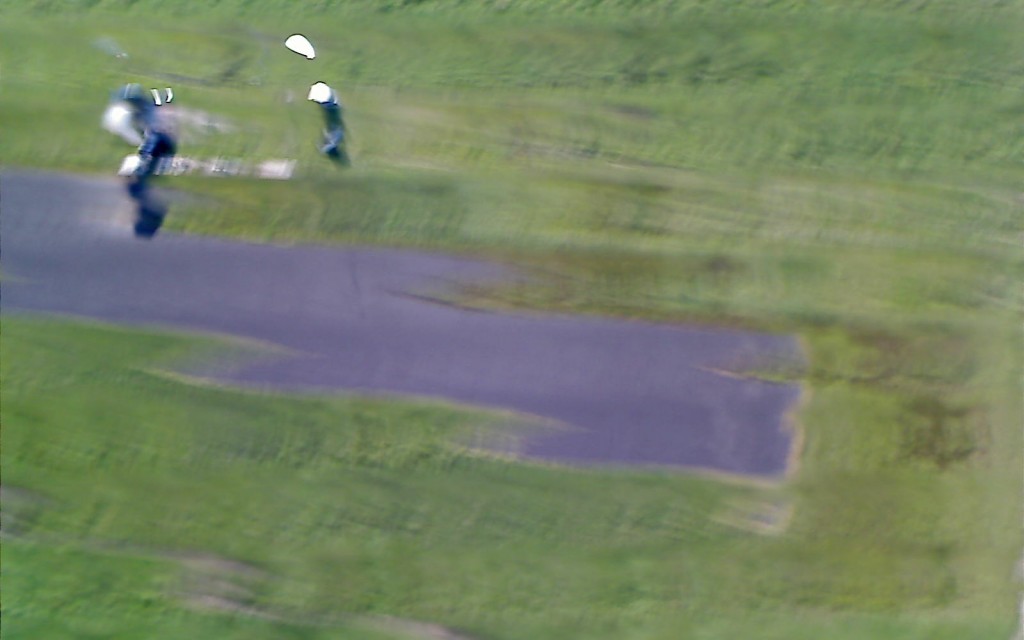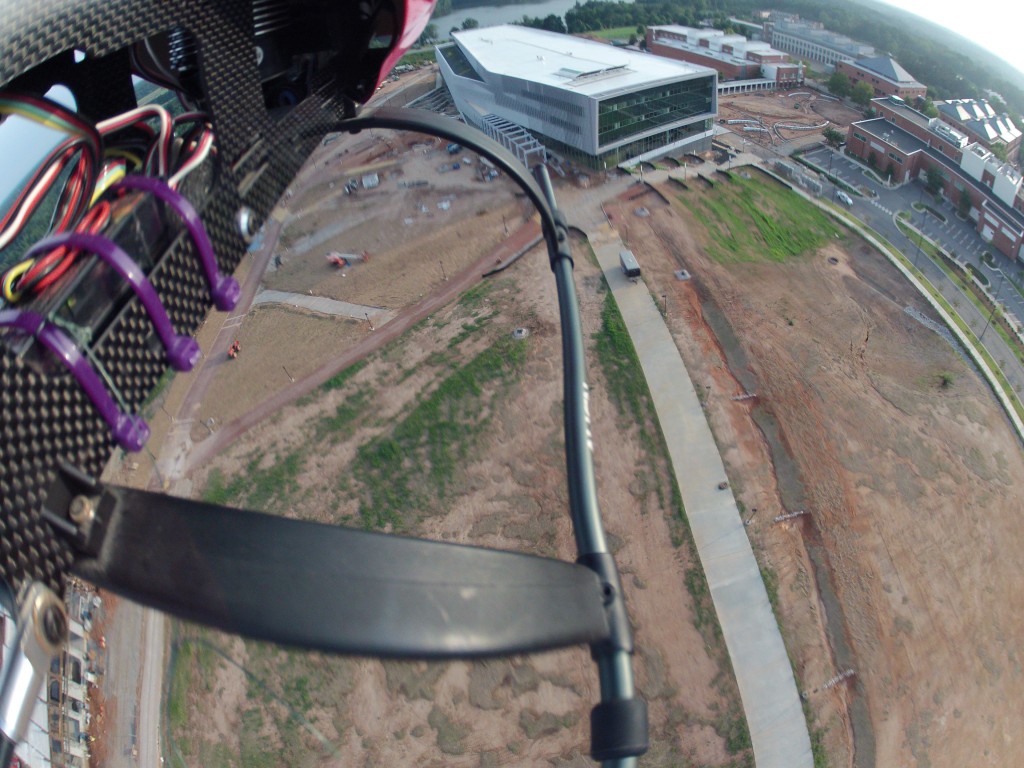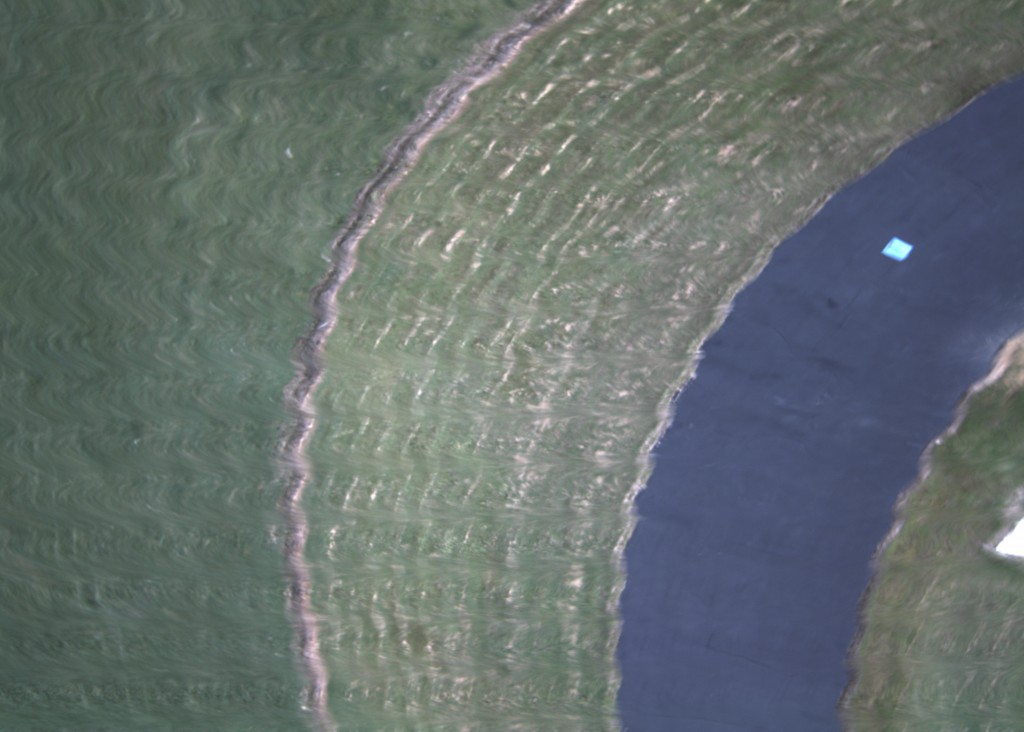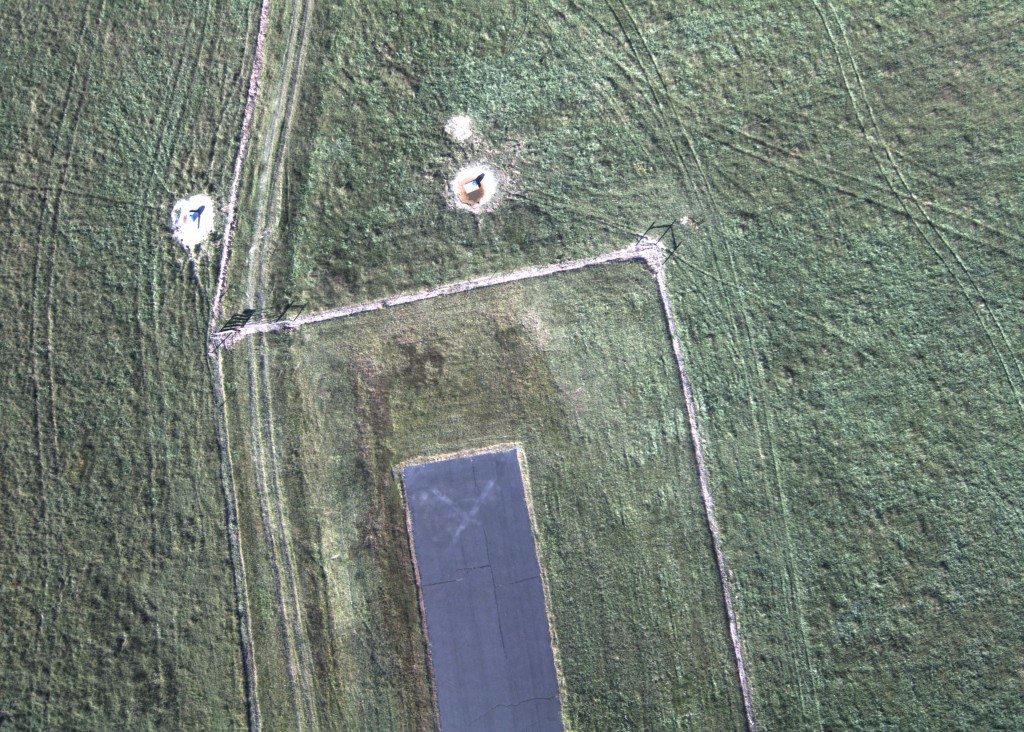UAV CMOS Distortion
- January 4th, 2016
- Write comment
Using unmanned vehicles to capture aerial images is likely the most common use for these platforms. The imaging system on these vehicles often uses a CMOS image sensor thanks to their relatively low-cost and wide spread use in most DSLR cameras. One challenge of these sensors is that they can be susceptible to rolling shutter distortion. The final result can vary between an image distorted beyond any usability and being imperceptible.
Webcam
In this first example a Logitech Webcam Pro 9000 was attach to a Beaglebone black which would continuously take snapshots. The imagery system was mounted on a 25 pound fixed wing aircraft with a gas engine. From the photo it is clear that, due to the slowness of the capture, the image is largely unusable.
Go-Pro
In another experiment a GoPro was mounted to the side of an electric helicopter. The image here is much more usable and the distortion may not even be obvious with the exception of the landing gear in the foreground. This highlights one of the dangers of this kind of distortion. While the distortion may sometimes be very obvious, it may also be very subtle in the image.
IDS Camera
While the camera and its settings play an important role in determining the effect of rolling shutter, the mount and vehicle dynamics can also have a dramatic effect. In this case, the same camera with similar settings was mounted on a gas powered helicopter and then a gas powered fixed wing aircraft.
The helicopter was then flown through an aggressive set of maneuvers will the camera was capturing photos. The camera was mounted directly to the helicopter frame with minimal vibration damping. In the image there are two sources of distortion obvious. Firstly, the straight runway now appears to arc up to the right. This is a result of the rapid yawing of the helicopter during the capture. The second source of distortion is obvious in the grass, fence, and edges of the photo. This higher frequency distortion is a result of the helicopter vibration as a result of the rotor.
When the camera was mounted to the fixed-wing aircraft, the image that is captured is substantially better. There is no obvious distortion as a result of the rolling shutter. The slower dynamics of the fixed wing aircraft flying straight, level, and steady keep the runway straight. The lower vibration levels of the aircraft and the addition of a vibration isolated mount removes the second source of distortion. It bears mentioning that differences in the color quality of the image may also be influenced by difference in sunlight between the two flights.
The effects of rolling shutter on aerial imagery can be quite severe, but are not insurmountable. Being conscious of these effects can help of when evaluating the camera hardware, sensors, mounting and vehicle dynamics which all feed into determining the final quality of the image.



